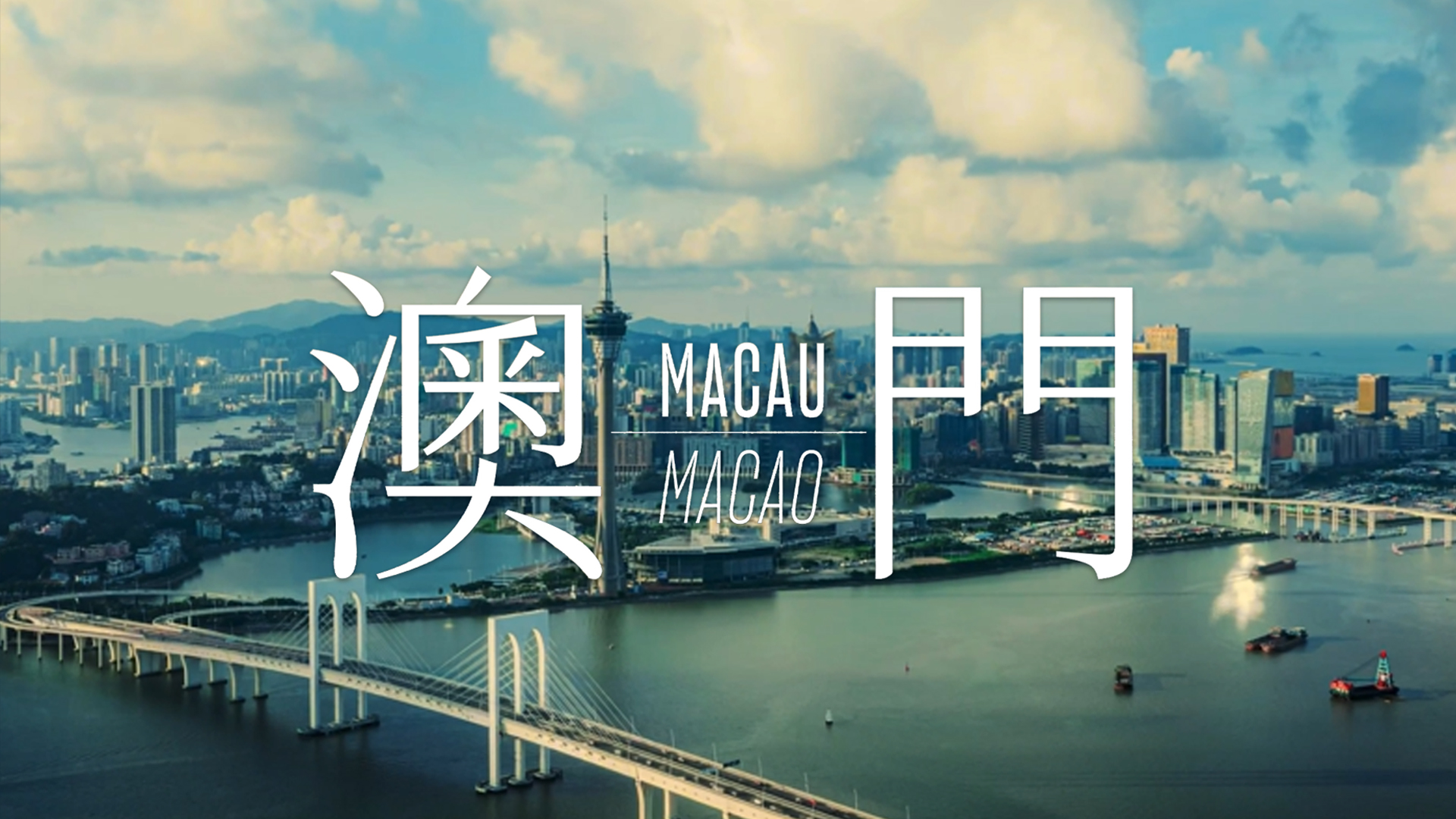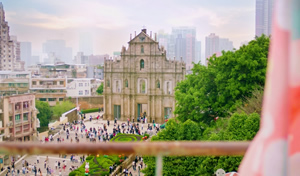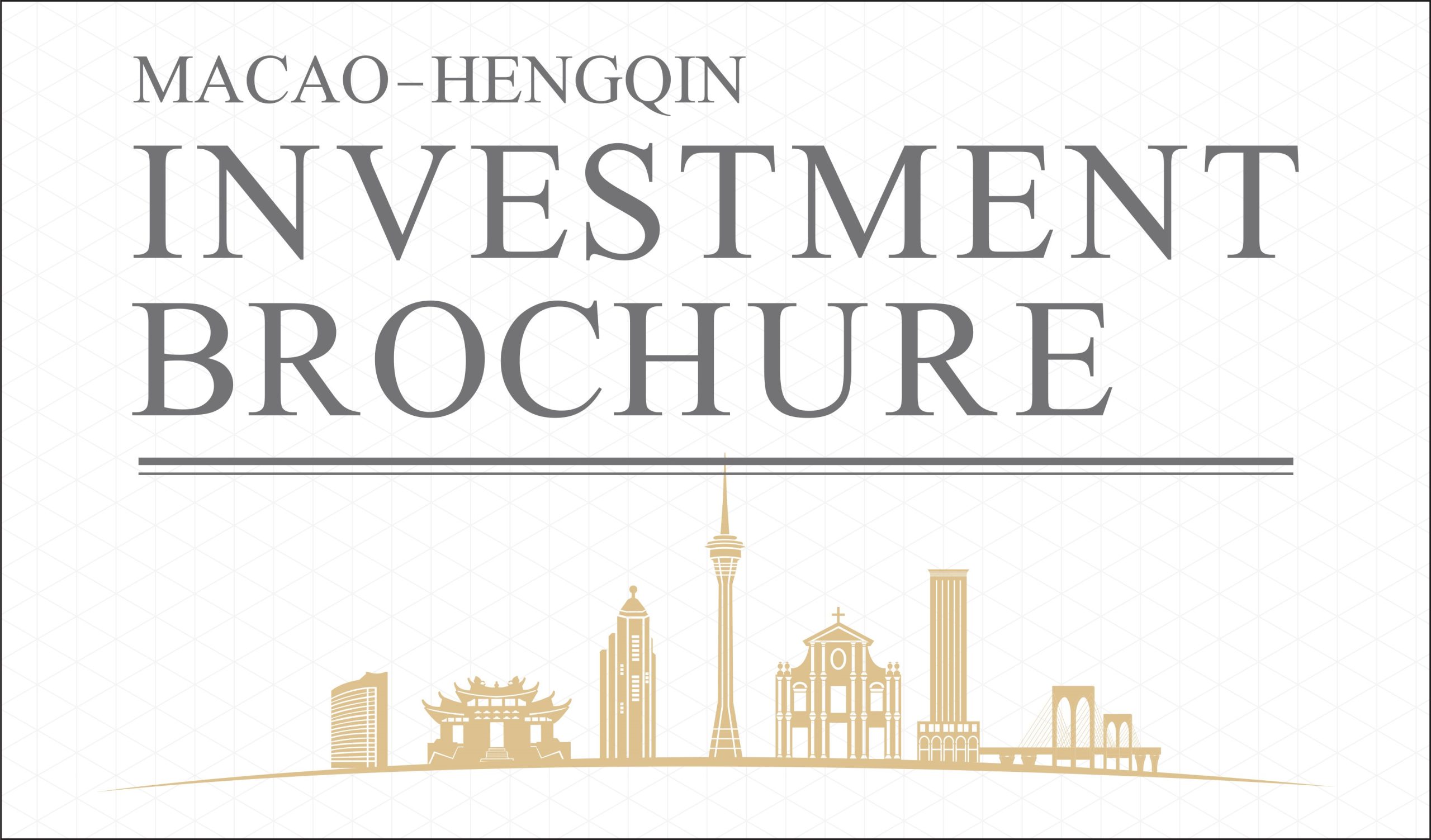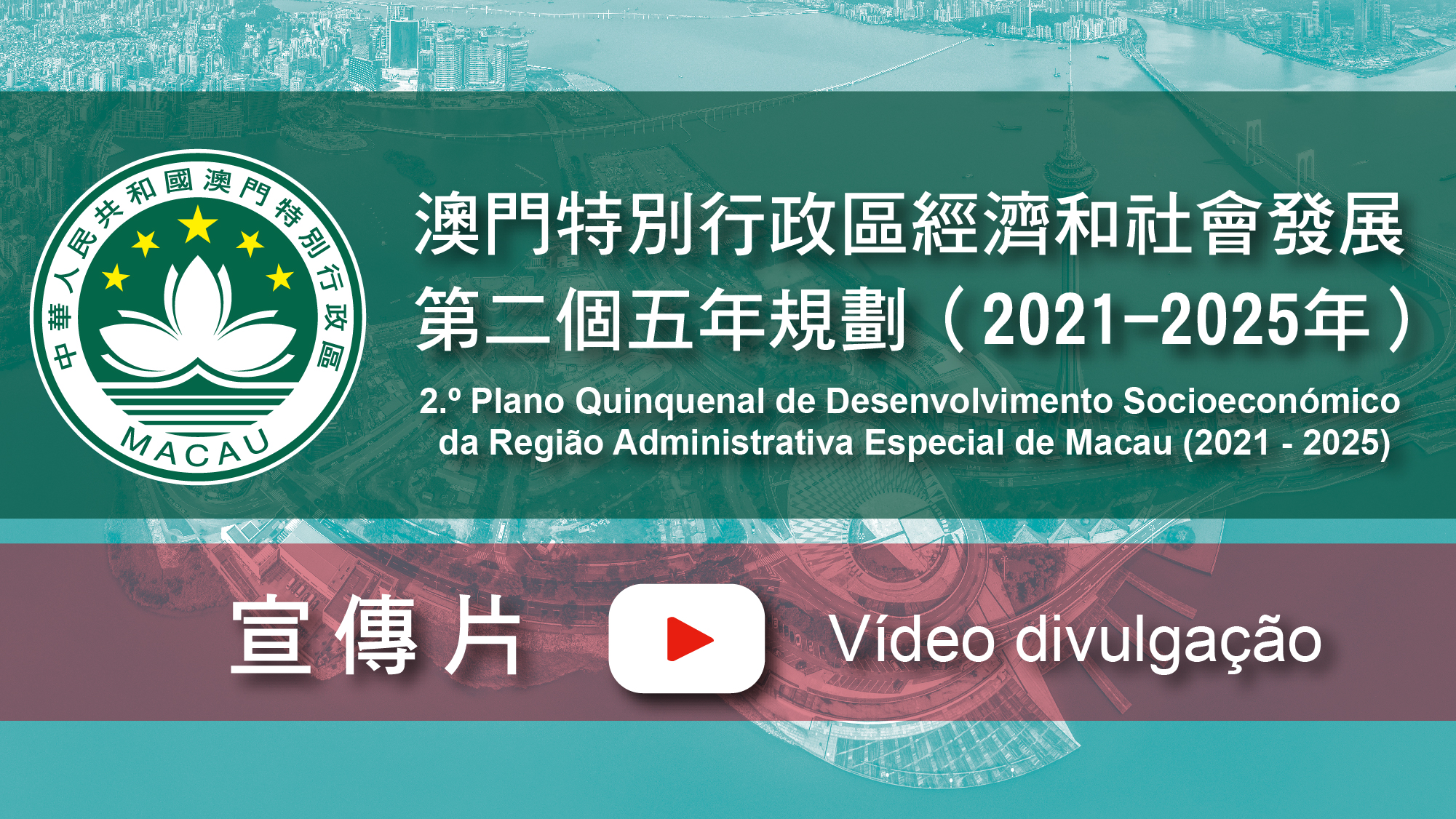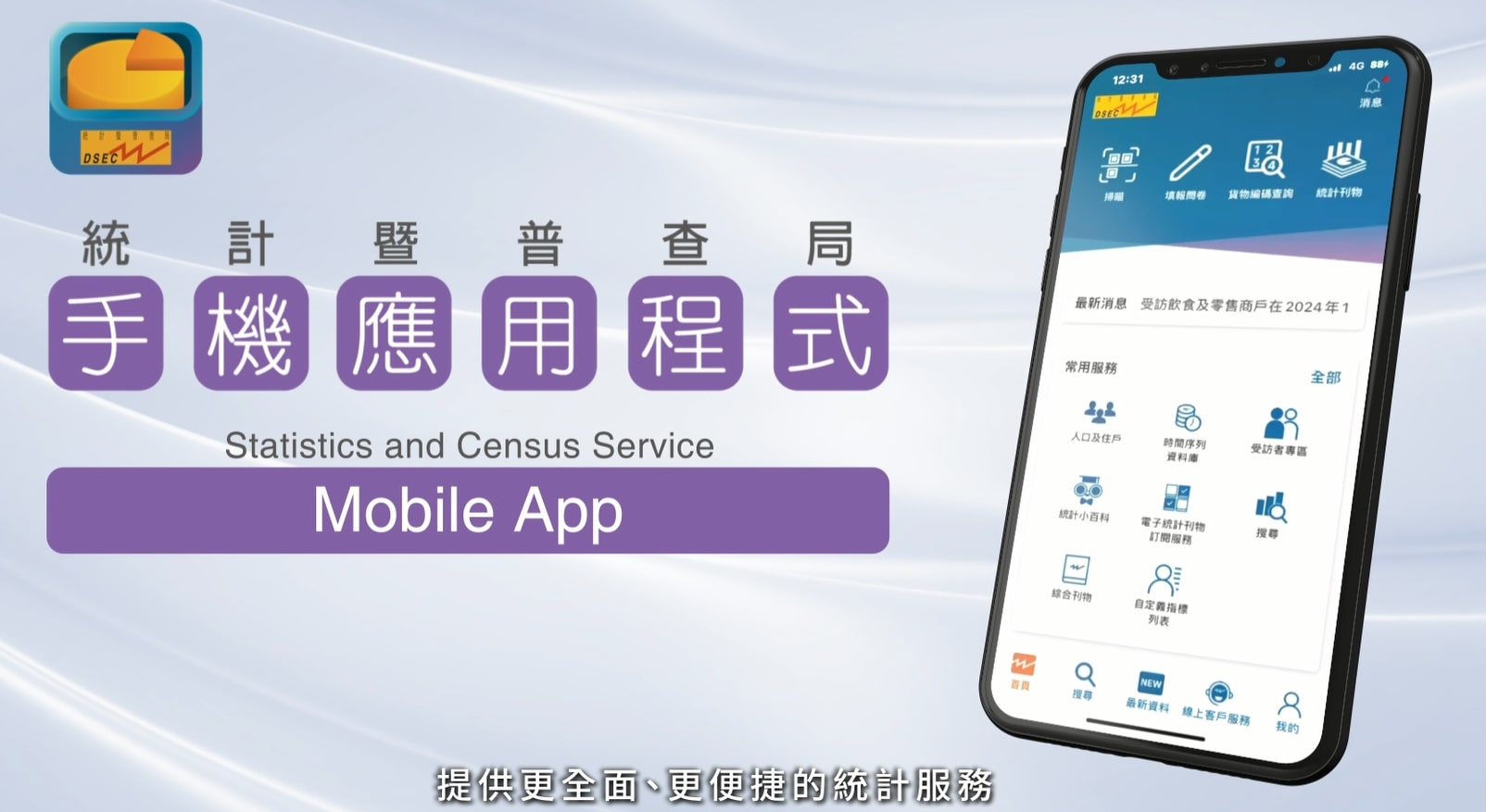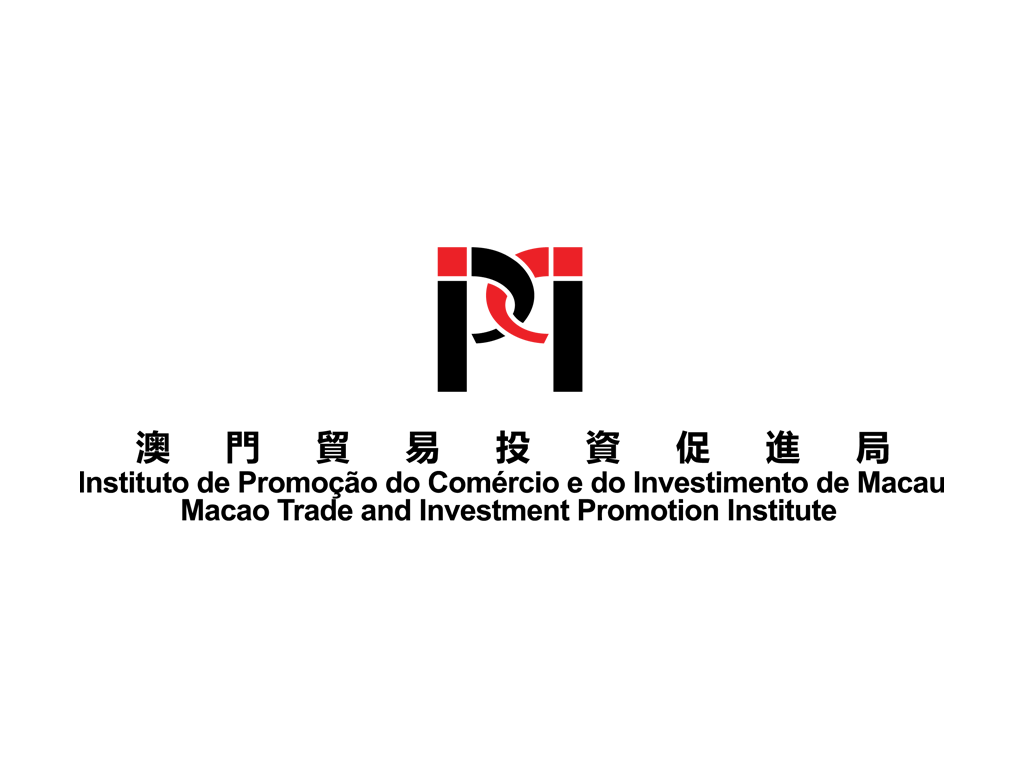Search Issues
SET SAIL ON A SEA OF OPPORTUNITIES
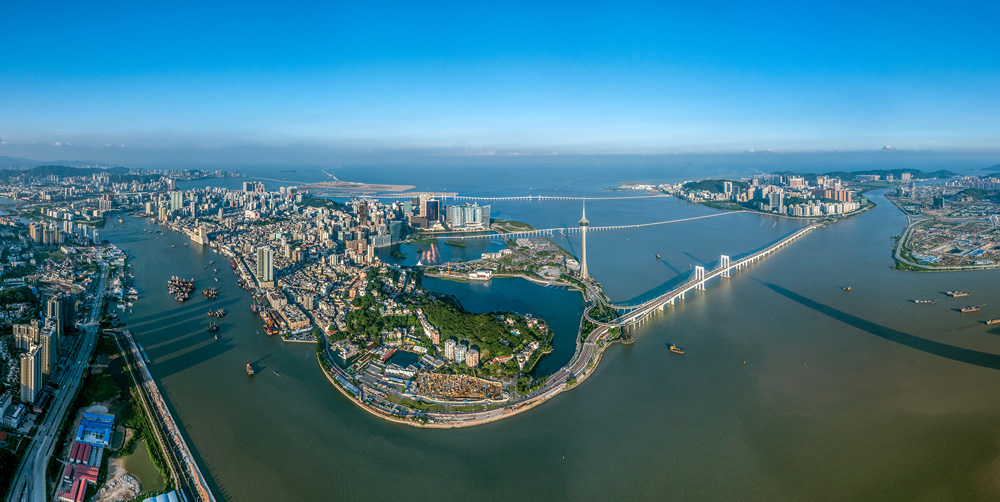
On 20 December 2015, the State Council promulgated Decree No. 665, containing a new Administrative Map of the Macao Special Administrative Region of the People’s Republic of China. The map puts 85 square kilometres of sea under the jurisdiction of the Macao SAR. The delineation of the city’s sea boundary allows Macao to develop a maritime economy, which means fresh economic opportunities – particularly in the sightseeing and leisure, convention and exhibition, shipping and logistics sectors. The development of the businesses in these sectors will contribute to accelerating Macao’s moderate economic diversification.
The Macao SAR sea and land boundaries are defined by the State Council’s Decree. The waters under Macao’s administration are divided into six sections: the Inner Harbour; the Taipa-Coloane channel; the southern coastal waters; the eastern coastal waters; a reclamation area featuring an artificial island; and the northern coastal waters. The land boundary adjustment focuses on the Border Gate facilities and Canal dos Patos.
The 85-square-kilometres of waters as demarcated, and the adjustment in Macao’s land boundaries, have a profound significance, says Macao SAR Chief Executive, Chui Sai On. They denote the full implementation of the principle of “One country, two systems”, and clearly define the application of the rule of law in Macao in those areas.
The demarcation of such maritime waters also provides the potential to greatly expand the space available for development in Macao, and assist in accelerating the diversification of the city’s economy, the Chief Executive says. He also notes the new administrative arrangement for Macao’s boundaries can create better conditions to deepen Guangdong-Macao co-operation as well as enhance the city’s contribution to the development of the country’s “Belt and Road” initiative, helping to improve the livelihood of local people.
Macao SAR’s Secretary for Economy and Finance Leong Vai Tac points out that following the boundary demarcations, Macao has access to improved conditions for the moderate diversification of its economy via the development of further non-gaming activities: namely more maritime activities, including maritime-related tourism and the free travel of yachts between Macao and Zhongshan in Guangdong province. By developing its maritime economy, Macao can strengthen cooperation with Mainland China, in particular with Guangdong, such as via participation in the development of the “Greater Harbour Area of Guangdong, Hong Kong and Macao”, the Secretary says. The “Greater Harbour Area of Guangdong, Hong Kong and Macao” is a coastal hub for logistics, serving Guangdong province, Hong Kong and Macao.
Macao business people and academics believe that the act of demarcating Macao’s maritime waters has allowed the city to turn its attention to the question of how best to use its marine resources and how such economic endeavours can contribute to developing Macao into a World Centre of Tourism and Leisure.
Accelerating Macao’s economic diversification
Knowing the extent of Macao’s waters allows the region to come up with new ways to co-operate with its neighbours in Guangdong province so all can share the tourism resources and also the benefits. Lin Jiang, Deputy Director of Hong Kong, Macao and Pearl River Delta Research Centre at Sun Yat-sen University says co-operative use of resources benefits Macao’s tourism business.
“Macao is a small place. If it can forge strong links with Jiangmen, Zhongshan and Zhuhai and even places such as Siyi and Xinhui, the tourism resources in these places can be integrated. For instance, the city could join in the promotion of Chimelong Ocean Kingdom on Hengqin Island. Developing a maritime economy and marine tourism resources through co-operation is mutually beneficial for Mainland China and Macao,” Mr Lin says.
The Central Government and the Macao Government signed in January agreements to co-operate in the fields of water resources, shipping and use of the sea. The latter agreement provides that consent is required from the State Council for any reclamation of land in Macao’s demarcated waters: such requests and responses would be based on scientific arguments and on the condition that no gaming shall be permitted on the reclaimed land.
Macao Political Economy Research Association President Samuel Tong Kai Chung says this indicates land can be reclaimed as and when needed for Macao’s development, thus increasing the resources available for tourism. “Macao’s 30 square kilometres or so of land cannot meet its development needs. However, with our new sea areas, we can consider building a marine or otherwise sea-related theme park which could increase our tourism resources and make visitors stay longer in Macao,” Mr Tong says.
Benefiting livelihoods and helping tourism
Clarity on the extent of Macao’s waters also provides a basis for the improvement of its sea transport services, in part by expanding the network of ferry services for the region, Mr Tong states.
“Macao can expand its marine transport services. It is said that Macao’s three bridges are insufficient for its road traffic, so we can consider having more ferry services between the Macao peninsula and Taipa or Coloane, similar to Hong Kong’s Star Ferry. Such services would be not just another transport option, but also an attraction to tourists,” he says.
“What’s more, we should think about cross-boundary traffic,” Mr Tong says. “Land, sea and air travel are interconnected. If we could set up a ferry service from the airside zone of Macao airport direct to Jiuzhou Port or somewhere else, allowing arriving passengers to reach Zhuhai without having to enter Macao, it would be much more comfortable and convenient for such passengers.”
Having definition to the extent of Macao’s waters is also favourable to the city’s tourism and leisure industries because they can now contemplate offering new leisure pursuits at sea, such as aquatic sports and pastimes, including cruising and yachting, Nam Kwong (Group) Co. Ltd. Assistant General Manager Song Xiaodong says.
Creating new conditions for logistics
Knowing the extent of Macao’s waters will benefit the logistics industry in general and the shipping industry in particular because it will allow the Macao Government to plan how to use the city as a port and integrate its operations with the rest of the region.
Macau Shipping and Logistics Association President Vong Kok Seng believes Macao’s lack of a deep-water harbour is no obstacle to the growth of cargo shipping services serving nearby places.
“We are not saying that we must build a deep-water port to develop Macao’s maritime trade,” Mr Vong says. “But we could increase short-distance and medium-distance shipping services to places in Southeast Asia, Taiwan and Mainland China, for example: shipping goods to these places will take about 10 hours or so.”
Because Macao has no deep-water port, many goods bound for the region must be trans-shipped via Hong Kong, which does have a deep-water port. Mr Vong says the problem currently is that goods bound for Macao are unloaded at the container terminal in Hong Kong, taken by road to another part of the port there and then loaded onto a vessel that brings them to Macao.
“This process requires a transit fee and incurs handling costs at two ports. After the goods arrive in Macao, they need to be transported to the consignee, incurring further costs. This may result in costs much higher than what we in the industry refer to as point-to-point ocean freight,” he says.
“Developing a port for short-distance and medium-distance cargo services would be really significant,” Mr Vong says. “Macao’s merchandise trade is made up mainly of imports, with a 9-to-1 ratio of imports to exports. Imagine if there were a port through which Macao could bring in products direct from neighbouring places, without the need for transshipment: this would be really beneficial, by bringing down costs,” he says.
Mr Vong notes Macao has two cargo ports: the Inner Harbour facility on the peninsula and the Ka-Ho Container Terminal on Coloane. The Ka-Ho Container Terminal can handle bigger ships than the Inner Harbour, but the waters off Coloane are still only 10 metres deep. The shallowness of Macao’s waters restricts the growth of short-distance and medium-distance cargo services. Such services currently use other regional freight facilities.
Mr Vong is hoping that some portion of Macao’s waters will prove to be deep enough to build a freight trans-shipment facility. “This could be jointly developed with a suitable partner in Guangdong, such as Hengqin, Jiangmen or Zhongshan,” he says.
Port facilities and MICE development
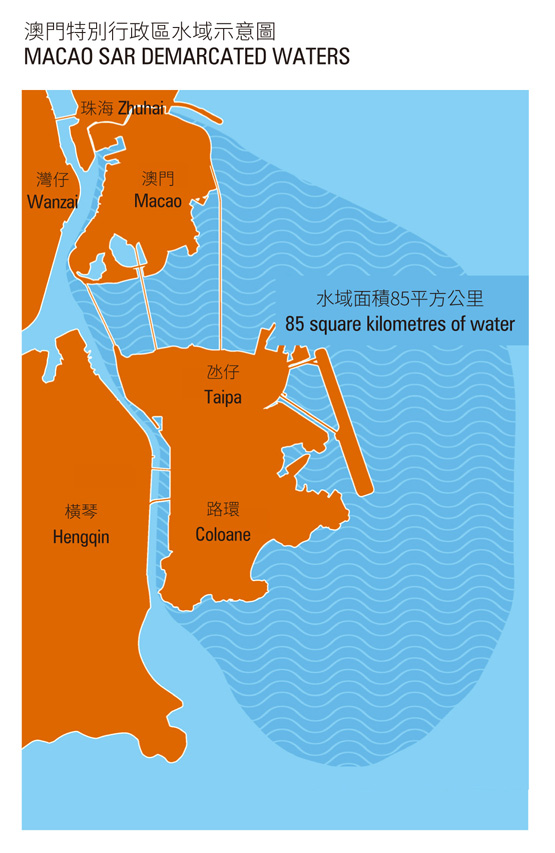 “In terms of infrastructure, Macao lacks a deep-water port and does not have enough berths. But the clarification of its administrative boundary at sea has helped create conditions for building bigger marinas where super-yachts can be berthed. I believe that with the SAR Government’s hard work, we will be able to attract more foreign yachts to berth in Macao,” says Nam Kwong’s Mr Song.
“In terms of infrastructure, Macao lacks a deep-water port and does not have enough berths. But the clarification of its administrative boundary at sea has helped create conditions for building bigger marinas where super-yachts can be berthed. I believe that with the SAR Government’s hard work, we will be able to attract more foreign yachts to berth in Macao,” says Nam Kwong’s Mr Song.
Mr Song remarks that yachting as a leisure pursuit is in its infancy in business terms in Macao, as there is a lack of sufficient onshore facilities. But he adds that his company would seek – by organising a greater number of industry fairs – to stimulate interest among companies in the possibility of moving to Macao.
Macao Convention and Exhibition Association, which is one of the entities that organise the annual China (Macau) International Yacht Import and Export Fair (Macao Yacht Fair). The Association’s President Alan Ho Hoi Meng says that the fact Macao has 85 square kilometres of its own waters will benefit the organisers of boat shows: they will not need to spend as much money as before on dredging the seabed in order to allow the bigger vessels being exhibited to be brought close to the shore.
Mr Ho explains that dredging is currently necessary to allow the mooring of big yachts at Macao Fisherman’s Wharf when the yacht fair is held there, and that the organisers have been required to get the consent of the neighbouring Zhuhai Municipal Government.
“Silt from the Pearl River Delta accumulates in Macao. Dredging work has to be done so yachts over 40-feet in length can be moored. The cost of the dredging work is heavy,” Mr Ho says. “In our experience, dredging accounts for over 10 percent of our overall exhibition costs. But knowing the extent of Macao’s waters means we can build temporary jetties, like they did in Dameisha and Xiaomeisha in Shenzhen. Having temporary jetties will decrease the cost of organising yacht fairs or other boat shows,” he says.
“We can also expand the size of the yacht fair. Before, we could only exhibit 20 to 40 yachts. But now we know that Macao’s waters are more extensive than we thought, we can show more than 100 yachts,” Mr Ho says. He adds that the conventions and exhibitions industry should also consider holding a greater number of international meetings on maritime matters in Macao.
LAW ON MARINE MANAGEMENT ON THE DRAFTING TABLE
Macao’s Marine and Water Bureau and the Legal Affairs Bureau are jointly drafting a bill intended to improve the way the region’s waters are managed, the marine bureau says. The bill, once enacted, will guide planning for the management of Macao’s waters. The Marine and Water Bureau says it will commission a study of Macao’s marine resources. The results of this study will be an important basis for plans for the infrastructural and economic development of Macao.
Chief Executive Chui Sai On told the Legislative Assembly in April that the government hoped the bill to become law and the supplementary regulations to be put into effect this year. The Chief Executive said he would lead Macao’s effort to co-operate with Guangdong in maritime matters.



